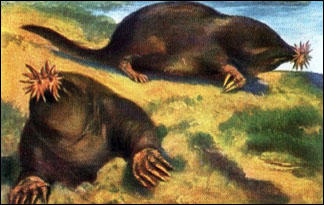Sometimes the most beneficial anatomical adaptations can leave an animal lacking in the looks department. Case in point: the star-nosed mole. Each fleshy ray in this animal's snout contains thousands of sensory organs that allow it to navigate and sense prey as it moves through the water or over land. As the star-nose wriggles and flexes, the mole learns everything it needs to know about its environment, including how to get back home. The star-nosed mole spends much of its time in water, but it also ventures above ground regularly to forage and often retreats to a network of subterranean tunnels.
Authors get paid when people like you upvote their post.
If you enjoyed what you read here, create your account today and start earning FREE STEEM!
If you enjoyed what you read here, create your account today and start earning FREE STEEM!
Dear friend, you do not appear to be following @wafrica. Follow @wafrica to get a valuable upvote on your quality post!
Downvoting a post can decrease pending rewards and make it less visible. Common reasons:
Submit